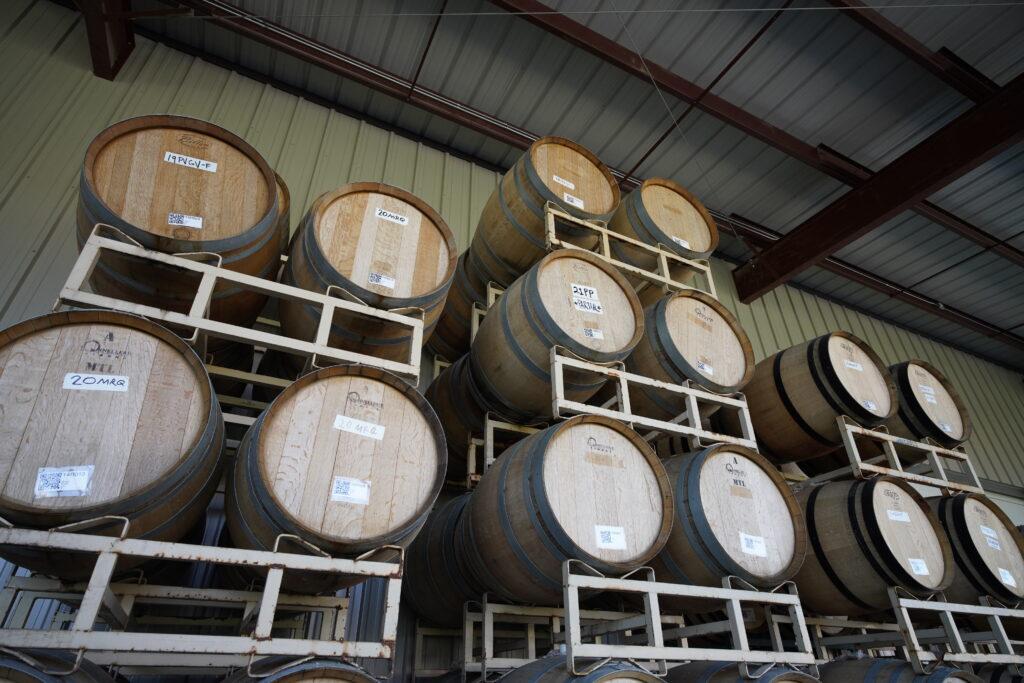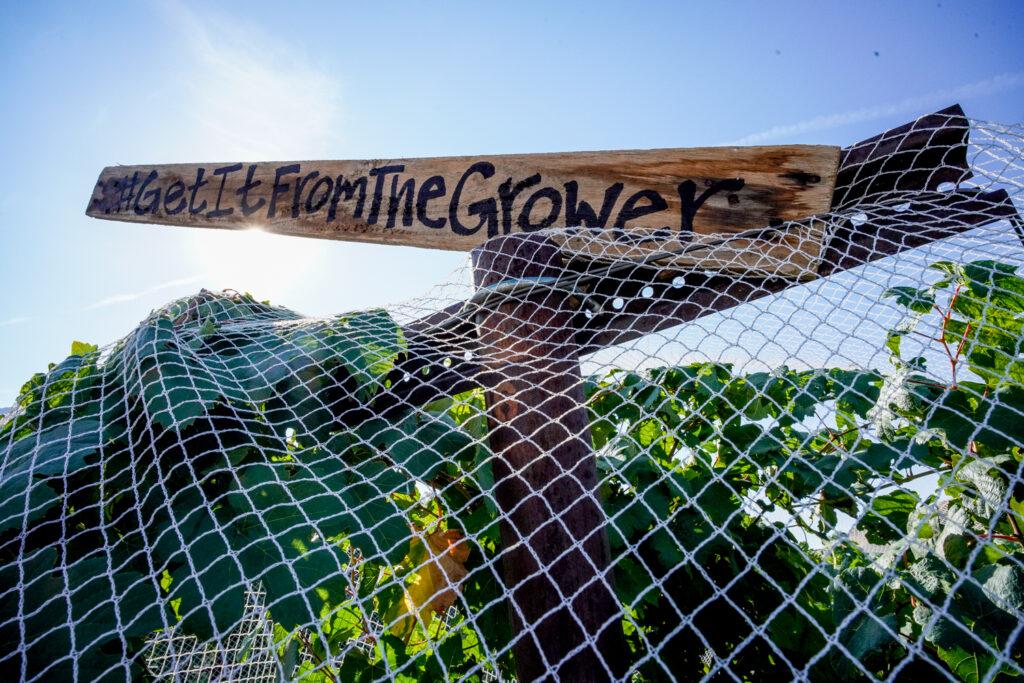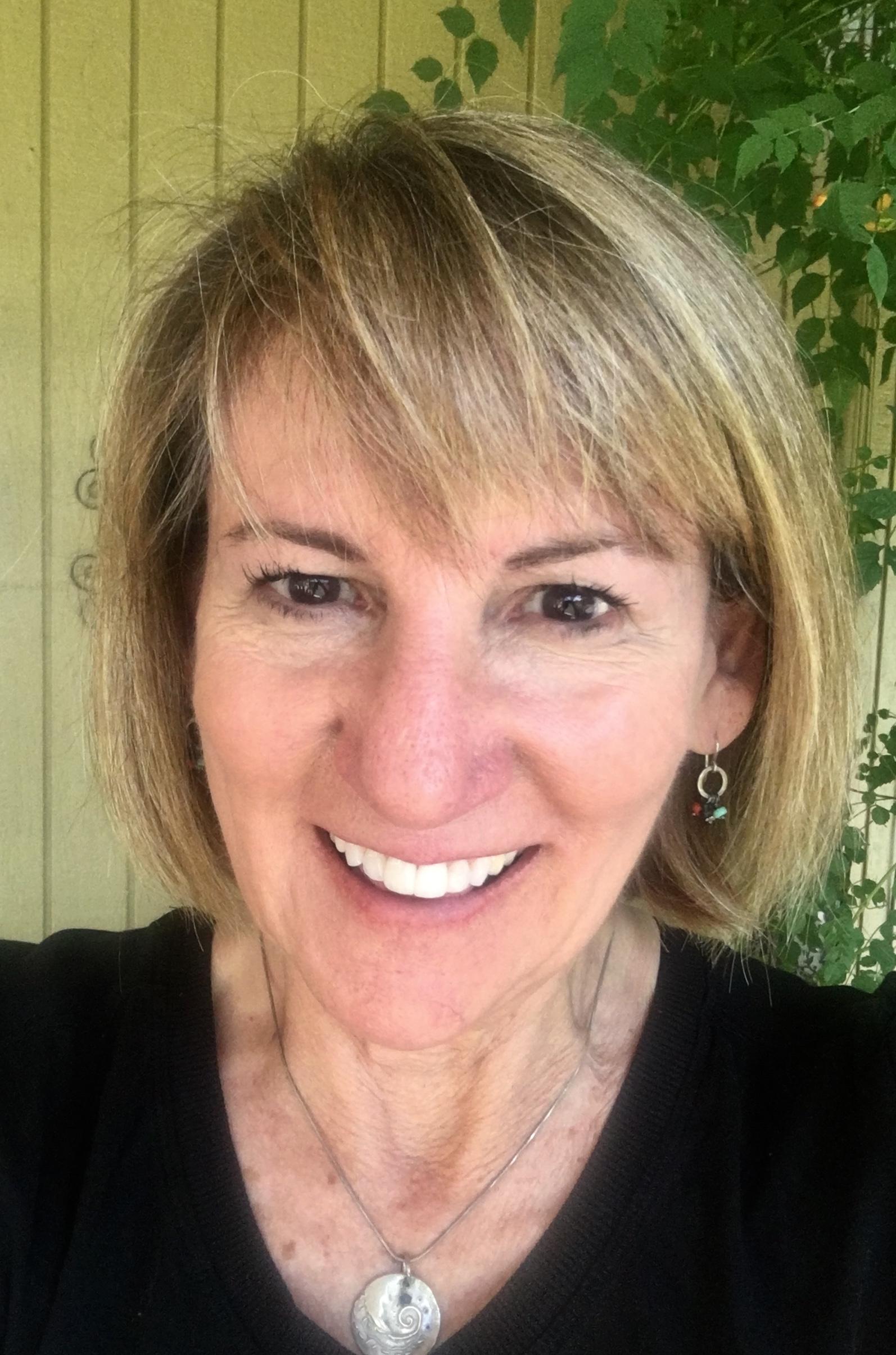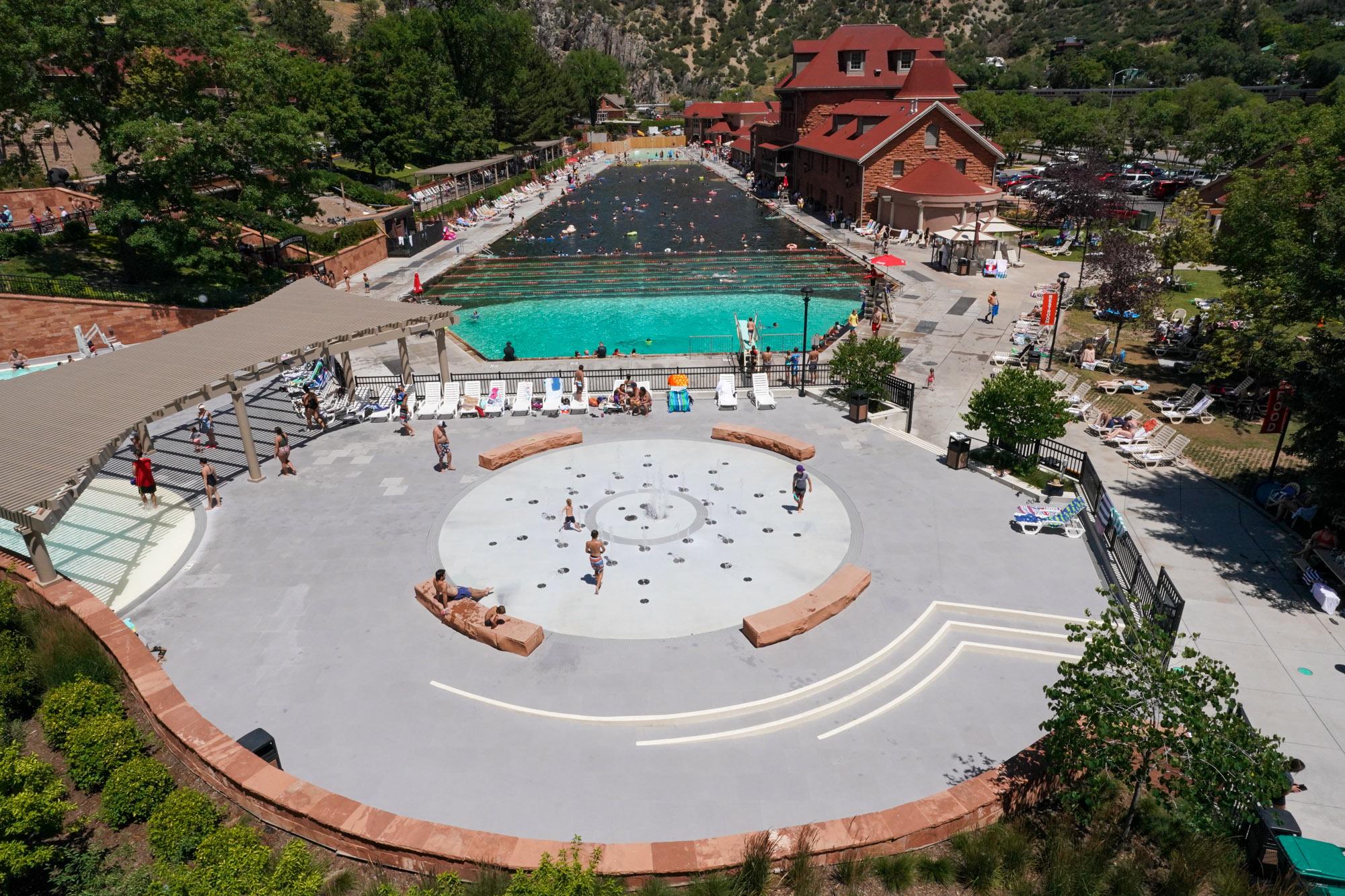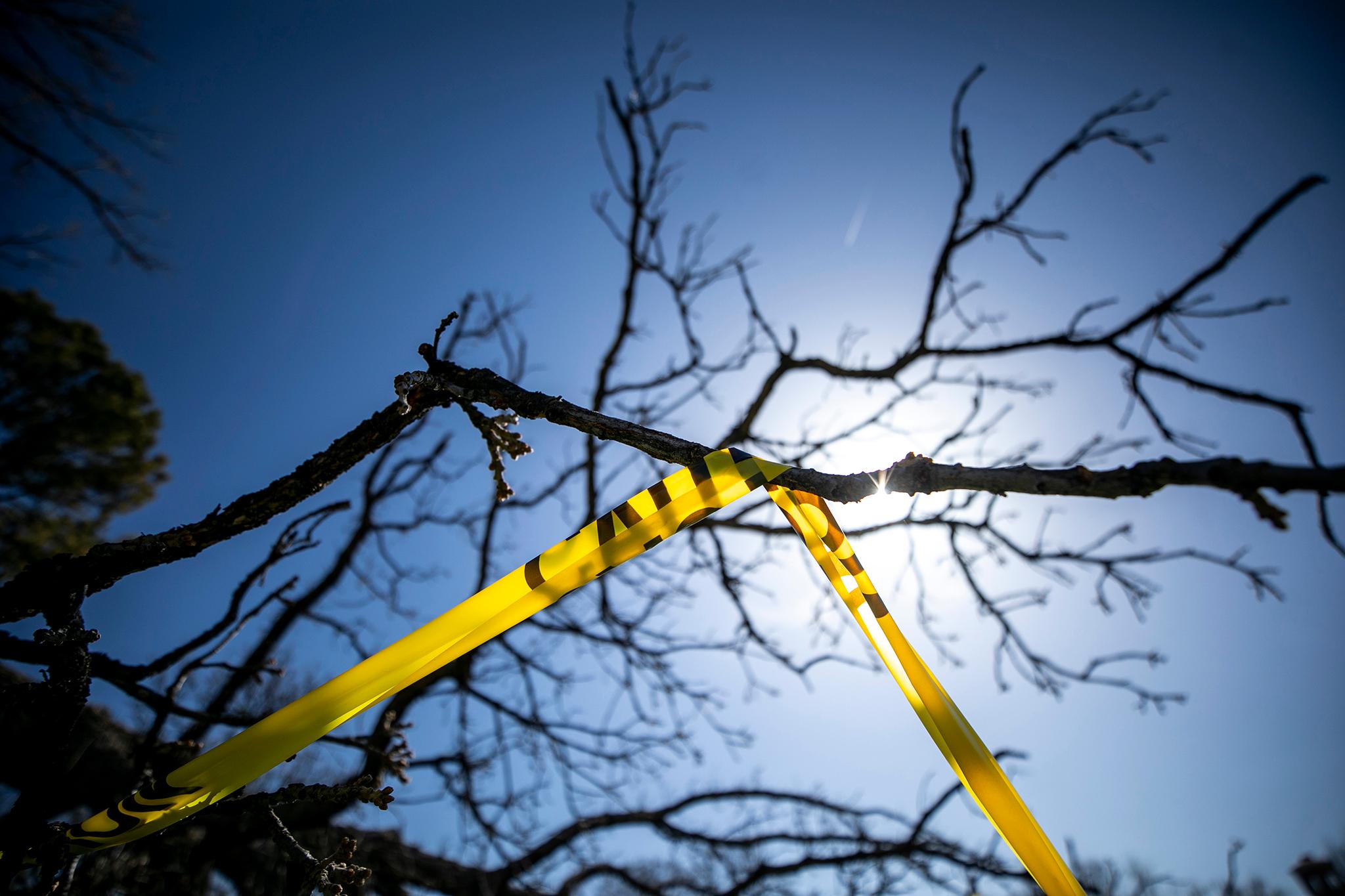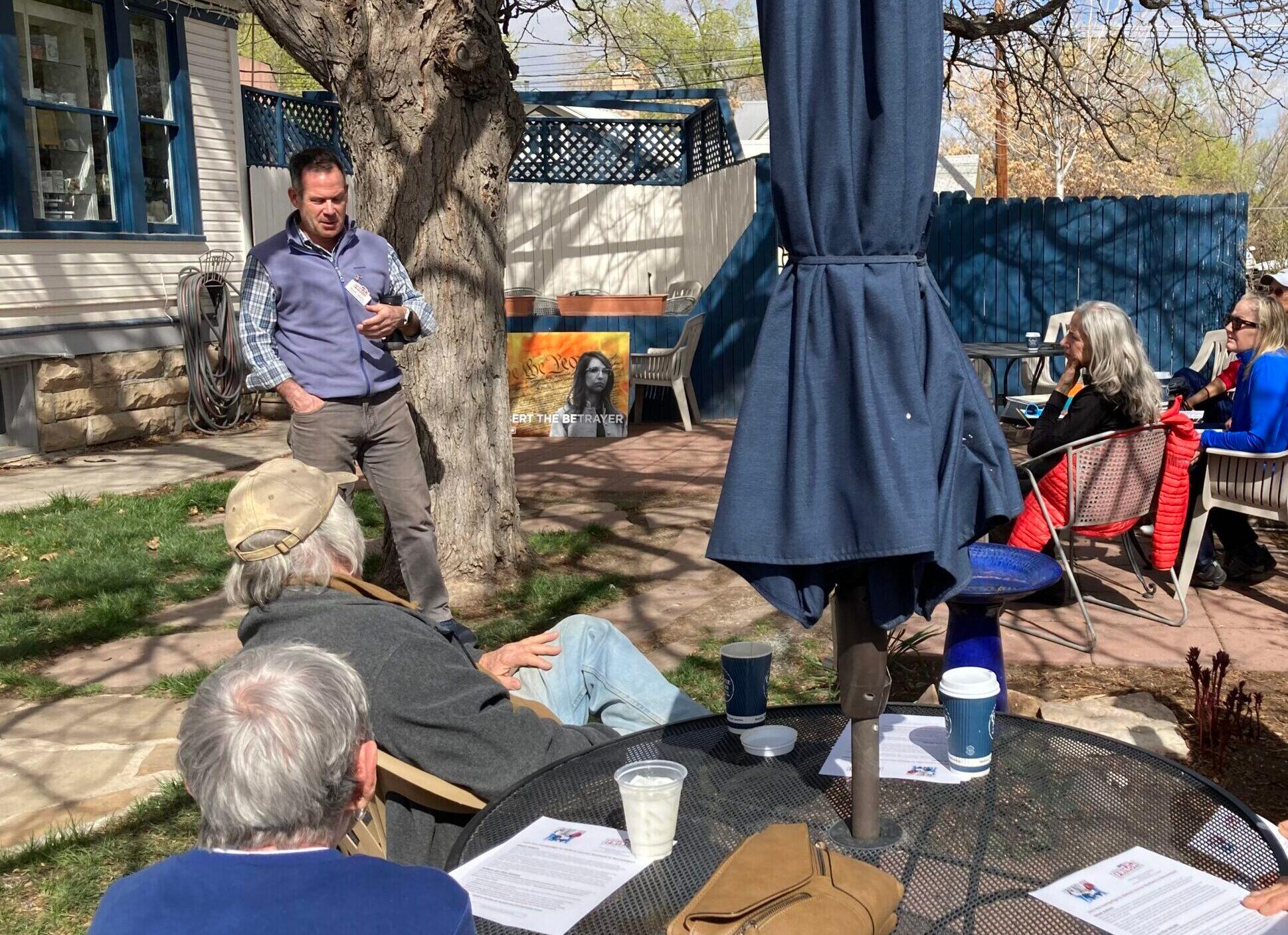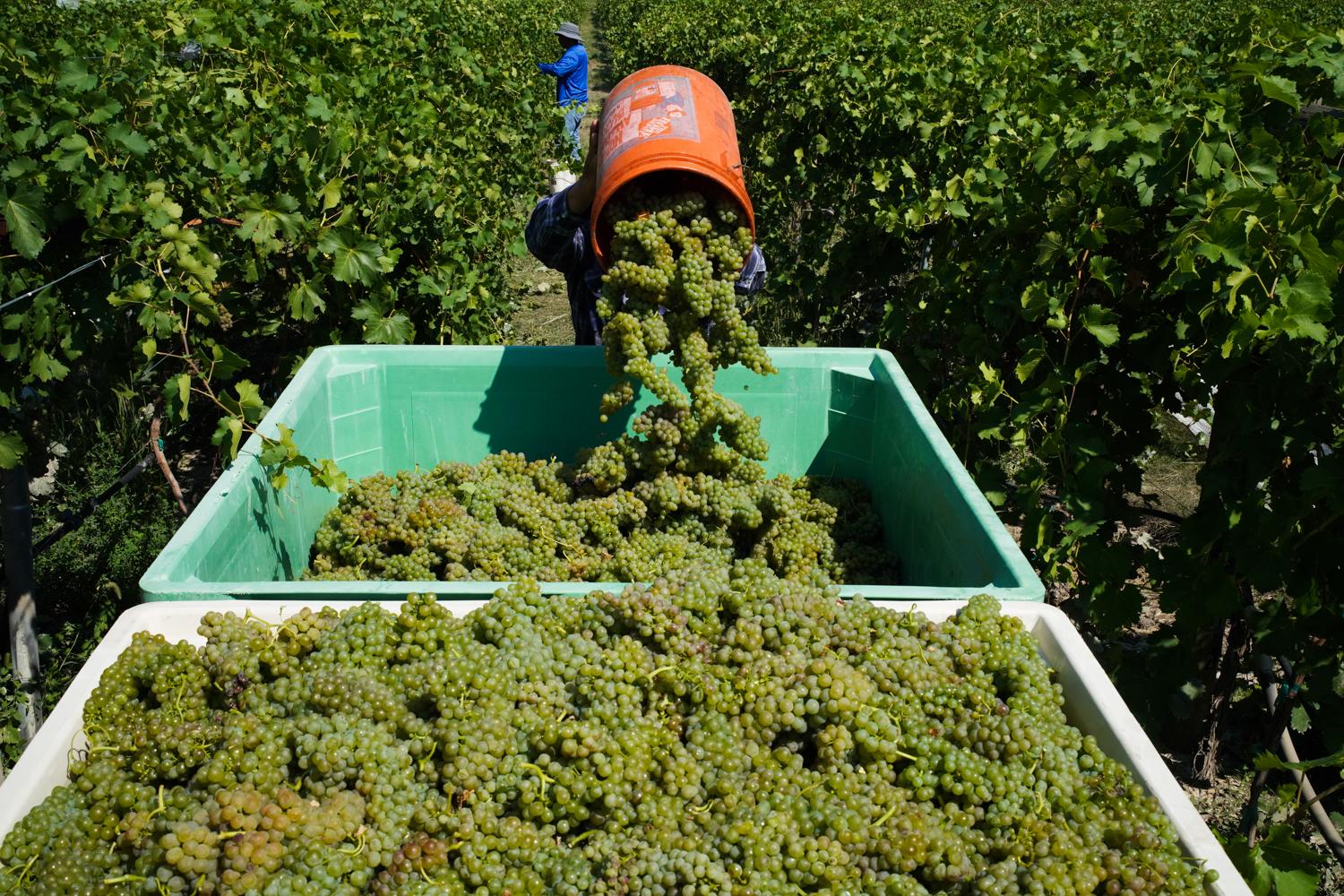
Sip a glass of Grand Valley wine, and you might just be enjoying the taste of climate change.
Yes, along with the usual notes of pear and leather, oak and cherry, some Grand Valley wines have new flavors because they were made from hybrid grapes bred to be more compatible with changing weather patterns. These grapes can be considered the mutts of the wine world – mixed species of grapes designed to create desirable characteristics of hardiness and taste.
They are the Petite Pearls, the Aromellas and the Traminettes – varieties that few cabernet-sipping consumers have likely heard of.
Kaibab Sauvage, owner of Sauvage Spectrum Winery in Palisade, has been growing grapes since 2006 and producing wine at his winery since 2019.
Sauvage and his winemaking partner Patric Matysiewski are relative newcomers to the state’s premier winemaking region, but they are also pioneers of switching out some traditional European grapes for hardier hybrids.
Sauvage and Matysiewski don’t just grow the new-kid-on-the-block grapes. They have learned to tweak their wine-making to better accommodate these different styles of grapes that have been snubbed by many vintners and even declared to be illegal in the winemaking regions of France.
“They don’t behave like traditional wine grapes,” said Sauvage.
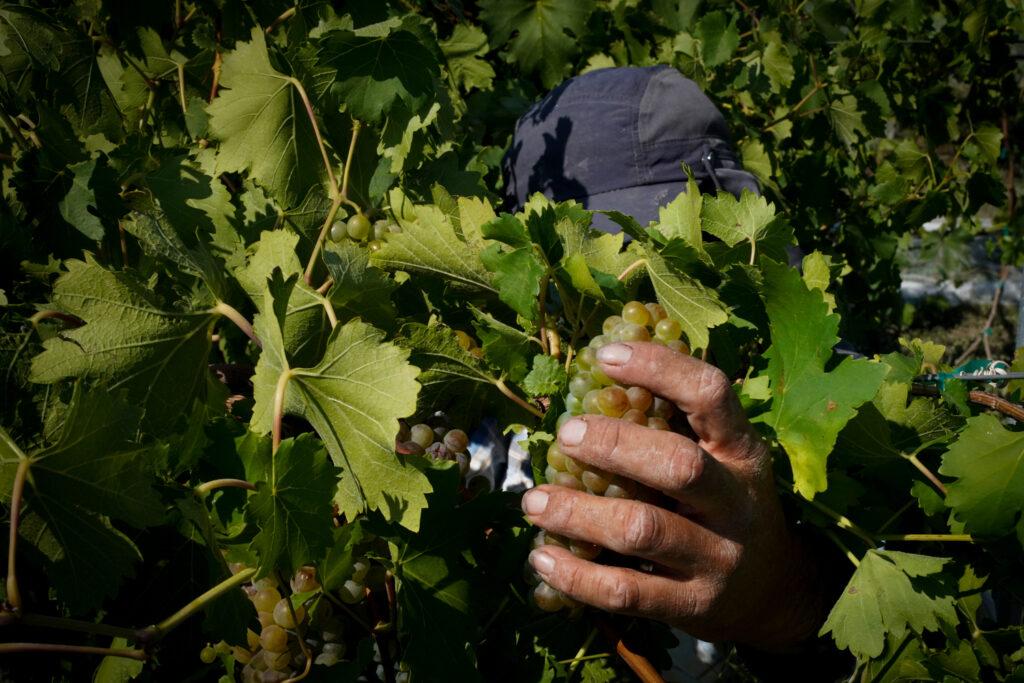
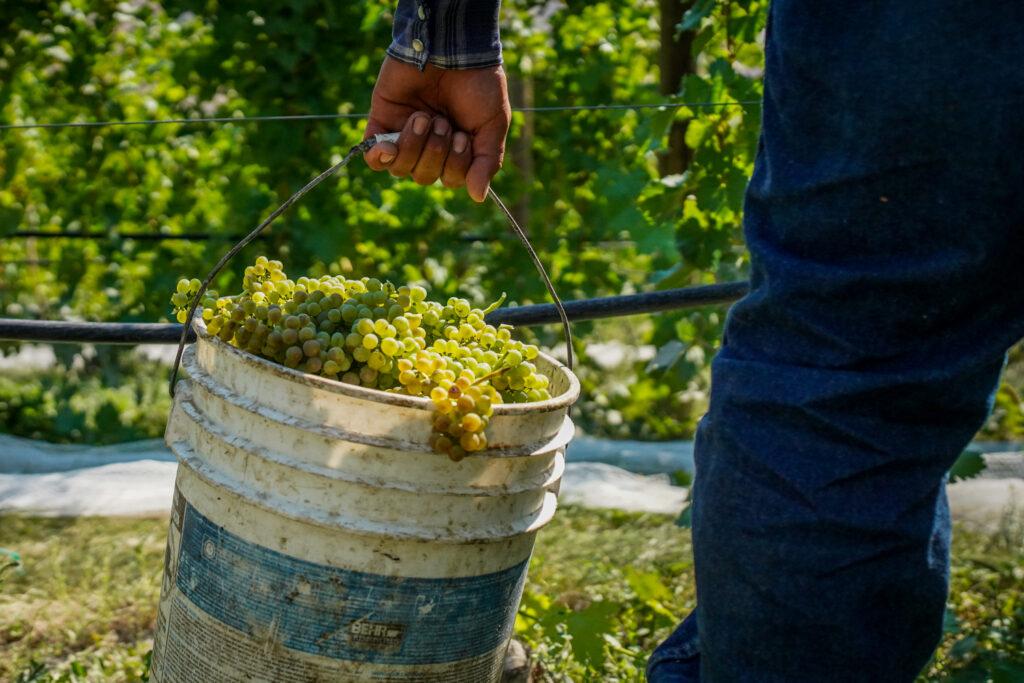
Climate’s impact on grapes and how it changes wine’s flavor
Sauvage began dabbling in hybrid grapes nearly a decade ago after freezes destroyed 75 percent of his traditional grape crop. Another deep freeze in 2020 took out about 90 percent of his grapes as well as those of many growers around Palisade.
Some growers doggedly replanted the traditional grape varieties, but Sauvage, who calls himself through-and-through a farmer, pivoted to more of the hybrids.
So, here he and Matysiewski are, in the whine and grind of a grape crushing day, doing their part to thwart climate change – and, in the process, tossing new elements into the Grand Valley’s terroir — the taste imparted by the environment where a wine is produced. Palisade’s terroir includes all the climatic conditions: sudden freezes, extended heat waves, lack of rain, the loss of nighttime cooling, and smoky air from more and more Western wildfires. That smoke can creep into grape skins and ultimately impart a flavor to the wine that Sauvage calls “ashtray.”
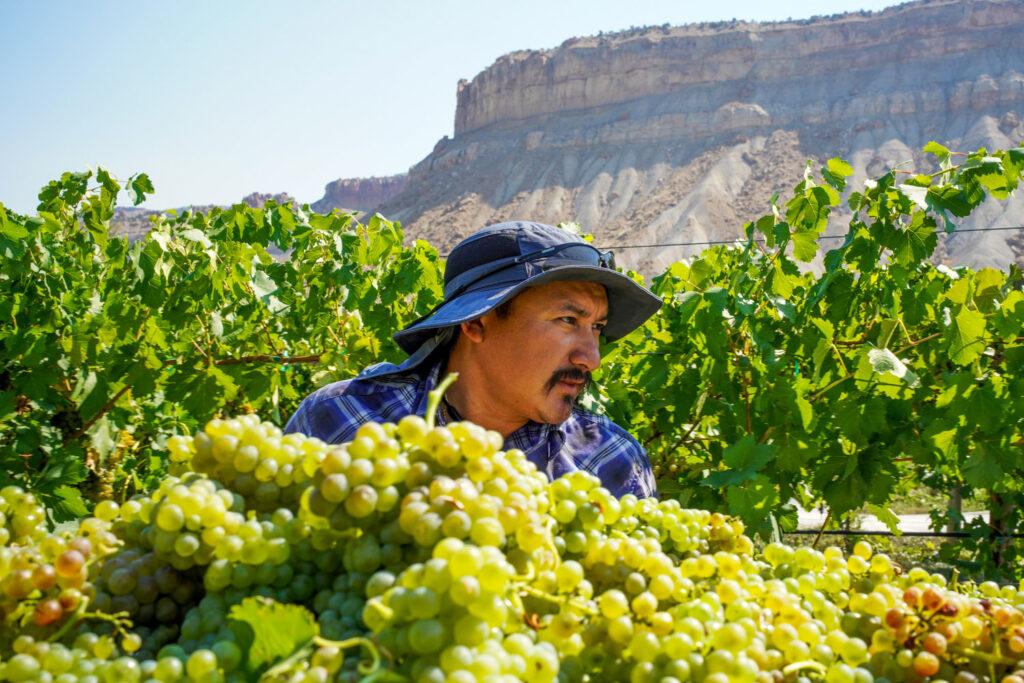
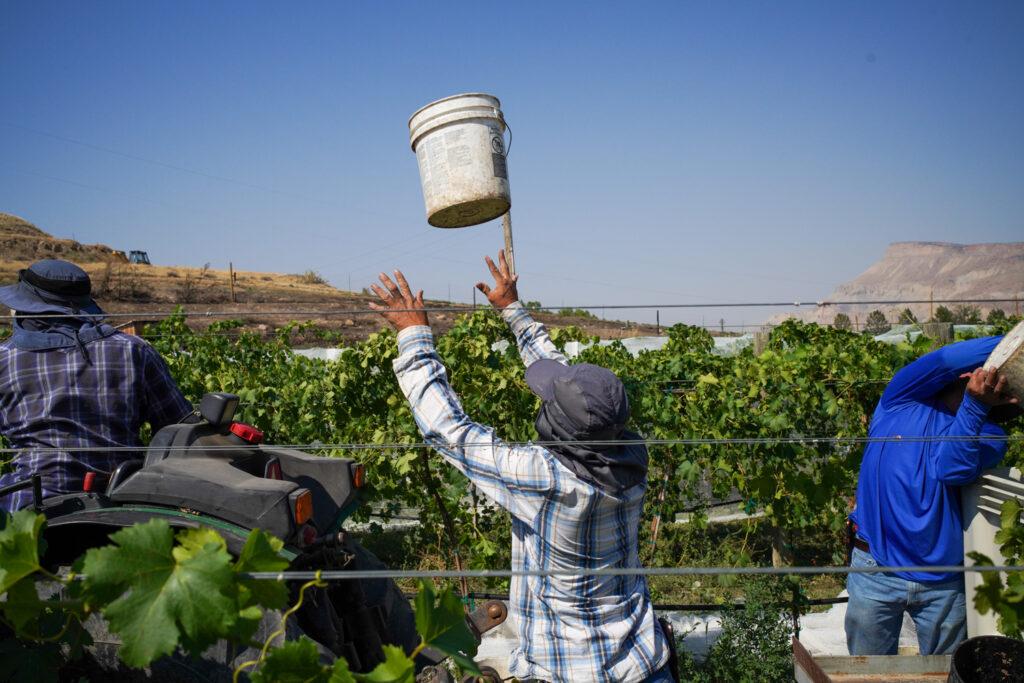
These hybrid grapes, which were bred to better meet all these challenges, bring a whole new flavor palette to the venerable Vitis vinifera – the Cabernet Sauvignons, Pinot Noirs, the Chardonnays that have been the staples of Colorado’s wine country for so many decades.
Grape growing has always been more dicey than normal in one of the highest-elevation wine regions in the world. (Sauvage Spectrum’s grapes grow at an altitude of about 4,700 feet.) Climate change has upped the gamble. For vintners, meeting the challenge of changing weather means more than just pulling a grape crop through a season of heat, cold, smoke and pests.
Ten percent of Sauvage Spectrum’s grapes are now hybrids, but even those hardier grapes are not foolproof.
They can still be bombarded by wild weather swings and are still susceptible to the busy beaks of hungry birds that can strip a vineyard in no time. That is why grape vines are protected under acres of netting. And bears have been known to trundle under those nets into vineyards and take out acres of crops.
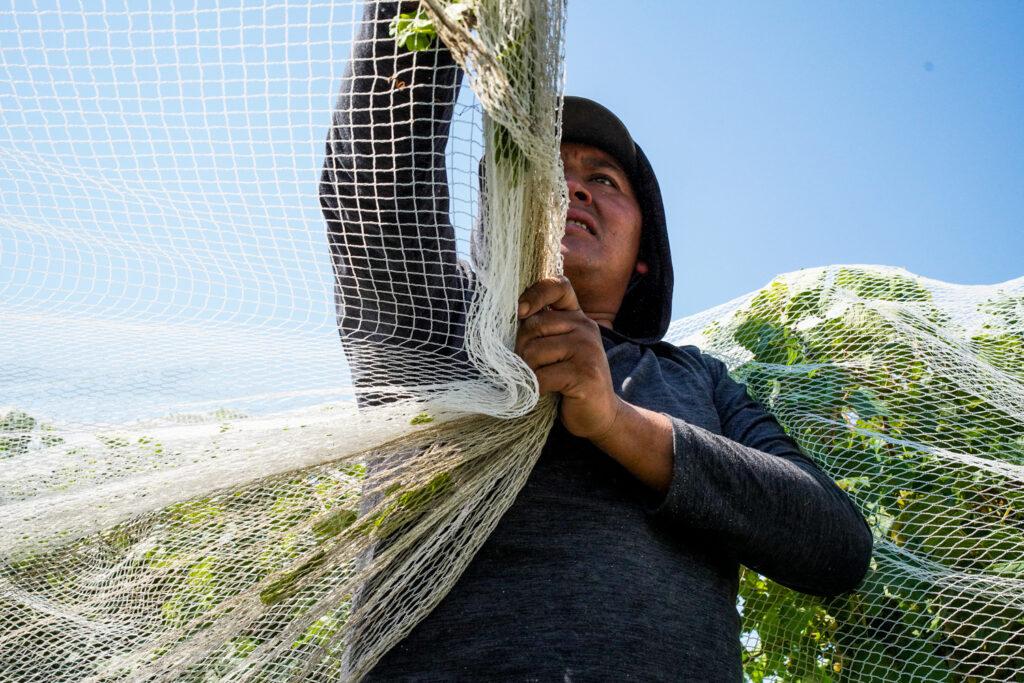
When it’s time to pick and make the wine
On a recent September day, Colorado Matters host Ryan Warner rode through blocks of those netted grapes and peach-heavy trees in a carbon-neutral pedicab powered half by solar batteries and half by the legs of Palisade Pedicab owner Mark Williams. Williams operates six pedicabs, ferrying visitors around the Palisade-area wineries to do his part to reduce energy consumption.
While Williams pedaled beneath the rocky folds of the Book Cliffs and the foothills of the Grand Mesa, Warner learned that Palisade-area grape growers must pull in their focus to a more myopic view of climate. Grape varieties must be planted with close attention to micro-climates. These areas of varying temperatures are no larger than city blocks, but crops in one block can be decimated by climatic factors while a neighboring block can survive unscathed. Sauvage said he pays close attention to which grape varieties he puts in this checkerboard of fruit and wine varieties. The hybrids give him more options as he works that board.
The gamble goes on once plump grape clusters have survived all the possible weather catastrophes and are festooning the vines.
Sauvage and Matysiewski took Warner under the net at one vineyard to show how they determine what kind of wine they can expect from deep purple Sirah grapes. Matysiewski measured the sugar content of the grapes by smashing a cluster in a plastic bag and pouring a bit of the juice in a device called a refractometer. He then held one eye to the device like he would wield a telescope and read the numbers. That sugar measurement has to be weighed with another measurement of acidity they did days earlier to help determine when it is time to pick these grapes for optimal wine flavor. The measurements show this year’s wines made from these grapes will be lower in alcohol content than normal because the warm temperatures have affected the sugars – not a bad thing because that is a trend with wine drinkers.
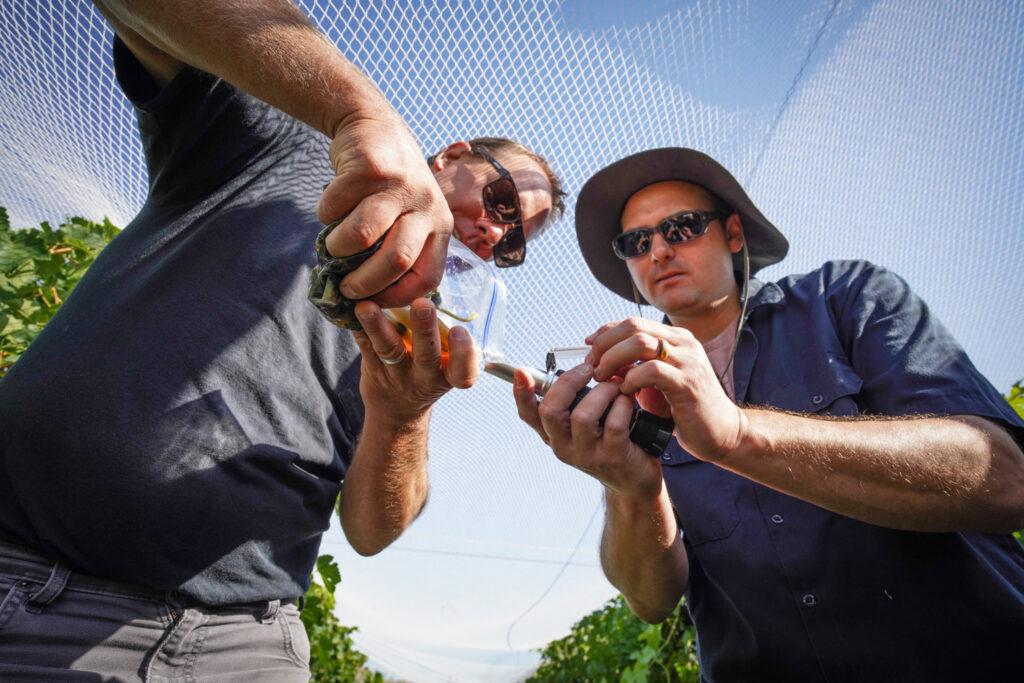
The measurement in the refractometer sparked a meaningful look between Sauvage and Matysiewski. The numbers say it is time to pick – now!
Once these grapes are in the bins and on to the crusher, Sauvage and Matysiewski are changing up the kinds of wines they produce to better feature the hybrid grapes. They are blending some with vinifera grapes and are turning others into natural sparkling wines called “pet nats.”
Sauvage likens the pet nats to bubbly wines that are halfway to being champagne. The pet nats are stoppered with bottle caps rather than a cork. And they are cloudy with sediment – the yeasty element in wine that Sauvage calls a “brioche note.”
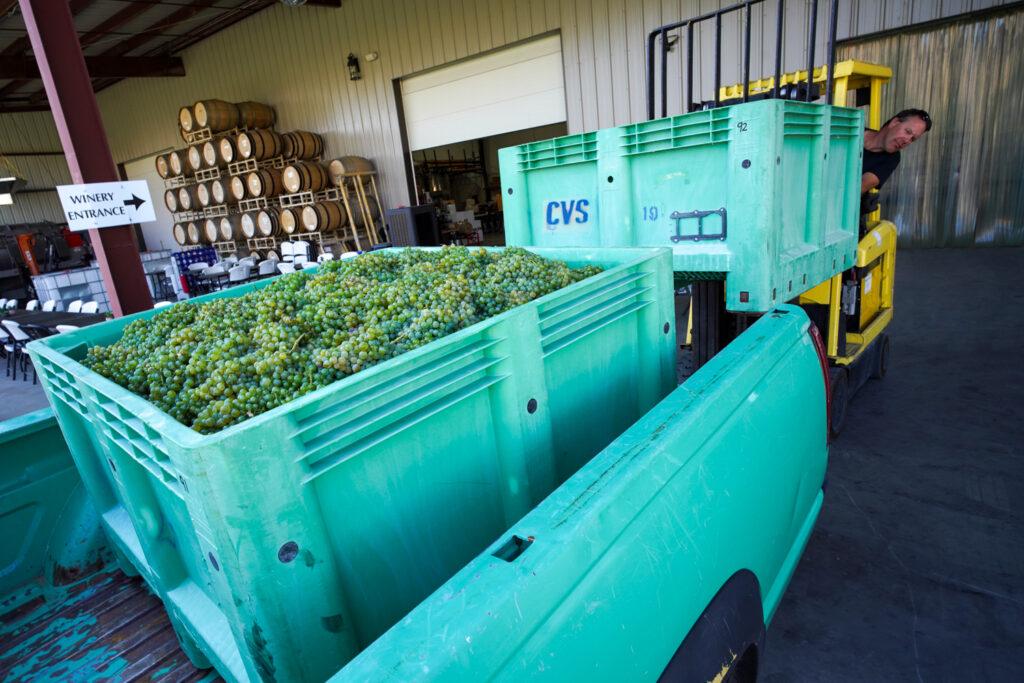
Sauvage and Matysiewski say wine drinkers should be open to change. Beyond accepting the new flavors of hybrids and new styles of wines, they should understand that most wines change with climate factors.
“Farmers and vintners have to be able to adapt every year to different conditions,” Sauvage said. “Wine drinkers should also be adaptable and know that wines will change year to year depending on conditions.
“Wine is an expression of place,” he added. And climate change is affecting those places.
